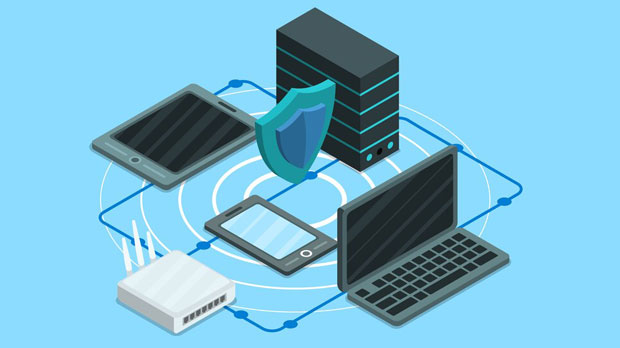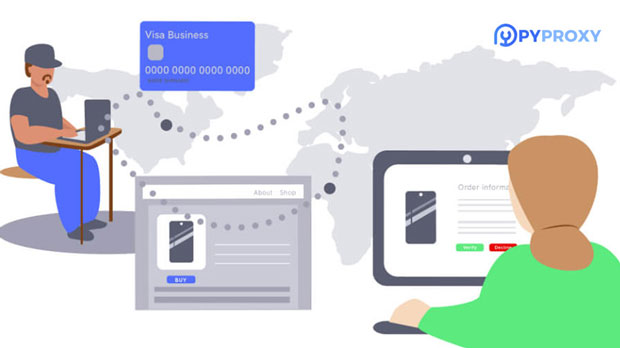Unlimited datacenter proxies have become an essential tool for cross-border e-commerce businesses, offering a wide range of applications that help enhance operations, protect online activities, and improve overall business efficiency. In a globalized e-commerce landscape, where competition is fierce and market demands are dynamic, businesses need solutions that provide them with the ability to scale, manage risks, and maintain seamless operations. Datacenter proxies, with their ability to mask IP addresses, facilitate data scraping, improve security, and enhance performance, are critical for e-commerce companies aiming to stay ahead of the curve. This article explores the different practical applications of unlimited datacenter proxies in cross-border e-commerce and how they can optimize business strategies. 1. Ensuring Data Security and PrivacyIn the realm of cross-border e-commerce, maintaining data security and privacy is of paramount importance. With an increasing number of transactions and sensitive customer data being exchanged globally, e-commerce platforms face heightened risks of cyberattacks, data breaches, and fraud. Unlimited datacenter proxies offer a crucial layer of security by masking the IP address of the server, thus preventing malicious actors from tracking or targeting the business directly.By using datacenter proxies, e-commerce businesses can route their traffic through secure proxy servers, effectively concealing their location and shielding their sensitive data. This helps prevent attackers from pinpointing specific business activities or targeting vulnerable parts of the system. For instance, when handling customer payment information, proxy servers can create an encrypted layer between the customer and the e-commerce site, mitigating potential risks.Additionally, using unlimited datacenter proxies helps businesses comply with international data protection regulations such as GDPR, as these proxies allow for better management of data flow across various regions, offering an added layer of privacy protection.2. Web Scraping and Competitive IntelligenceWeb scraping, a technique for extracting large volumes of data from websites, is vital for businesses that wish to monitor market trends, track competitors, and gather consumer insights. Unlimited datacenter proxies play a central role in enabling e-commerce businesses to perform large-scale data scraping without the risk of being blocked by websites.Without proxies, e-commerce businesses that engage in web scraping could face IP bans or CAPTCHAs from websites that detect and block suspicious activity. By using unlimited datacenter proxies, companies can rotate IP addresses seamlessly, ensuring that their scraping activities go unnoticed by the target sites. This allows them to gather data from multiple sources, including competitor pricing, product availability, consumer reviews, and more, enabling them to make data-driven decisions and stay competitive in the market.Moreover, businesses can use web scraping to identify trends in customer behavior, emerging product categories, or market gaps. This is particularly valuable in cross-border e-commerce, where businesses need to understand regional preferences, purchasing patterns, and local competition to optimize their marketing strategies and product offerings.3. Price Comparison and Dynamic Pricing StrategiesPrice comparison is a critical element of any e-commerce strategy, particularly for cross-border businesses that must stay competitive in different markets. Unlimited datacenter proxies enable businesses to monitor competitors' pricing across multiple regions and platforms without being blocked or throttled. By rotating IPs, businesses can continuously access competitor websites and track changes in pricing in real-time.With this information, e-commerce businesses can adjust their pricing strategies dynamically, taking into account regional variations, competitor discounts, and supply-demand fluctuations. The ability to collect accurate pricing data without risking detection gives businesses a significant advantage in staying agile and competitive in a fast-changing market environment.Dynamic pricing is increasingly being used to maximize profitability, and unlimited datacenter proxies are integral to this strategy. For instance, by analyzing competitors’ promotional offers or seasonal discounts, businesses can fine-tune their own pricing strategies, offering personalized discounts or adjusting prices based on specific consumer behavior, which can ultimately lead to higher conversion rates.4. Managing Multiple Accounts and Avoiding IP BlocksIn cross-border e-commerce, businesses often manage multiple accounts across various platforms and marketplaces, such as Amazon, eBay, or Alibaba. Each platform has its own set of rules and algorithms to monitor and restrict activity that appears suspicious, including the use of multiple accounts from the same IP address.Unlimited datacenter proxies can help e-commerce businesses manage multiple accounts by providing them with a wide range of rotating IP addresses. This prevents accounts from being flagged or suspended due to repeated logins from the same IP address, which could trigger an algorithmic block. Whether it’s for creating separate seller accounts, managing different storefronts, or conducting bulk account operations, using unlimited datacenter proxies ensures seamless activity across multiple accounts without risk of being banned.In addition, proxies help businesses bypass regional restrictions that may prevent access to certain platforms or services in specific countries. For example, businesses can use datacenter proxies to access e-commerce platforms in countries where their products may not be available or face restrictions.5. Overcoming Geo-restrictions and Accessing Localized ContentIn cross-border e-commerce, accessing region-specific content and localized information is essential for businesses that want to expand into foreign markets. Geo-restrictions can hinder access to certain websites, online stores, or marketplaces based on the user's geographical location. This presents a significant challenge for e-commerce businesses attempting to engage in international trade.Unlimited datacenter proxies can help businesses bypass these geo-restrictions by providing them with IP addresses from different regions. By simulating a local presence, businesses can access localized content, such as regional pricing, shipping costs, and tax rates, which are crucial for tailoring the e-commerce experience to different markets.Moreover, by using proxies from various countries, businesses can identify specific market trends, understand local consumer preferences, and gain insights into cultural nuances. This allows them to optimize their marketing efforts, product listings, and pricing strategies for each region.6. Fraud Prevention and Risk ManagementFraudulent activities are a persistent issue in e-commerce, particularly for cross-border transactions that involve multiple currencies and payment systems. Unlimited datacenter proxies can assist in fraud prevention by identifying and preventing fraudulent transactions or suspicious behavior patterns on e-commerce platforms.By analyzing IP addresses, businesses can detect and block fraudulent activities, such as account takeovers or fake transactions. For instance, if a user from a foreign IP address is making an unusually large order, the system can flag the transaction for further review. Additionally, proxies can be used to simulate user behaviors and identify potential vulnerabilities in the system that cybercriminals could exploit.Datacenter proxies also help businesses avoid the risk of being unfairly penalized by payment processors or e-commerce platforms. By hiding the business's true IP address, it becomes harder for fraud detection systems to track or trace legitimate transactions that may appear suspicious due to geo-location mismatches.Conclusion: Maximizing the Potential of Unlimited Datacenter Proxies in Cross-border E-commerceUnlimited datacenter proxies have proven to be indispensable tools for businesses engaged in cross-border e-commerce. By offering enhanced data security, facilitating web scraping, supporting dynamic pricing strategies, enabling seamless account management, and bypassing geo-restrictions, they provide significant value to businesses striving for success in the global e-commerce arena.As e-commerce continues to expand globally, businesses will need to adapt to the ever-changing landscape by utilizing innovative solutions like unlimited datacenter proxies to streamline operations, safeguard data, and optimize decision-making. In doing so, they can stay competitive, mitigate risks, and ultimately drive long-term success in the highly dynamic world of cross-border e-commerce.
Oct 26, 2025



































































